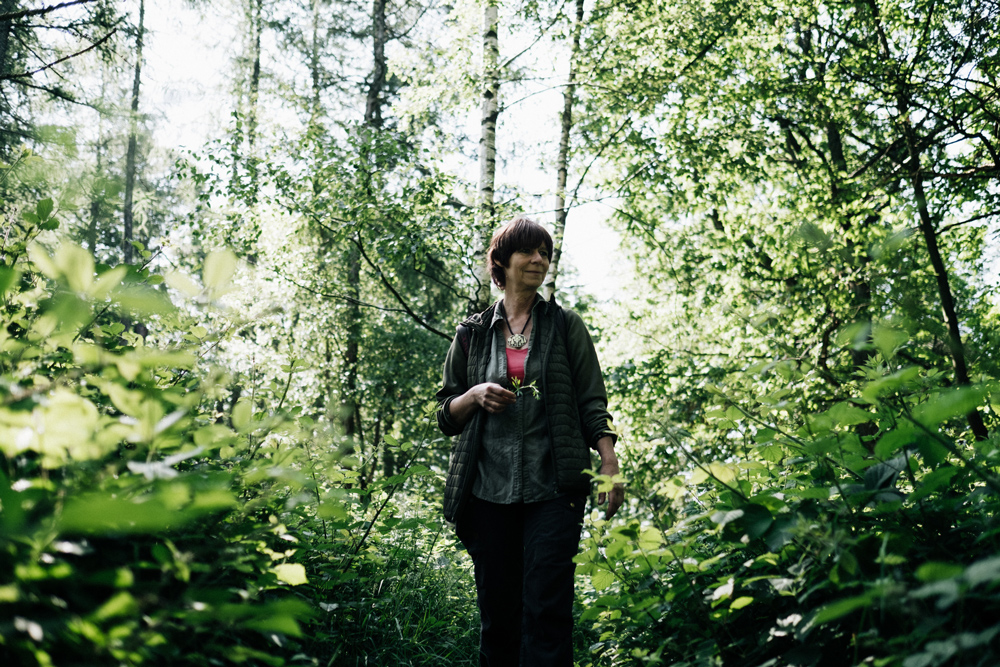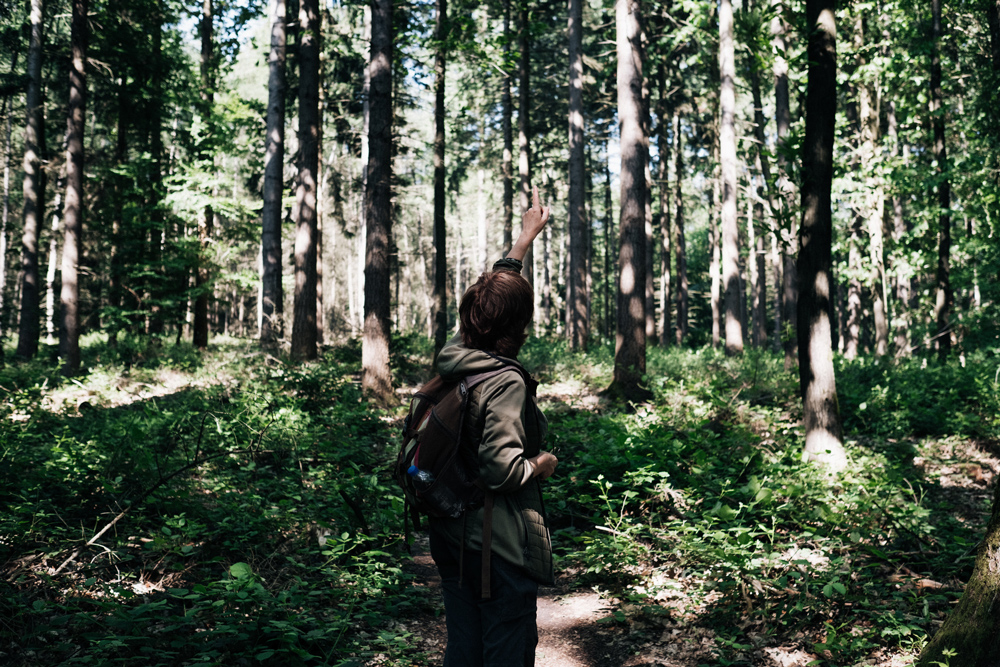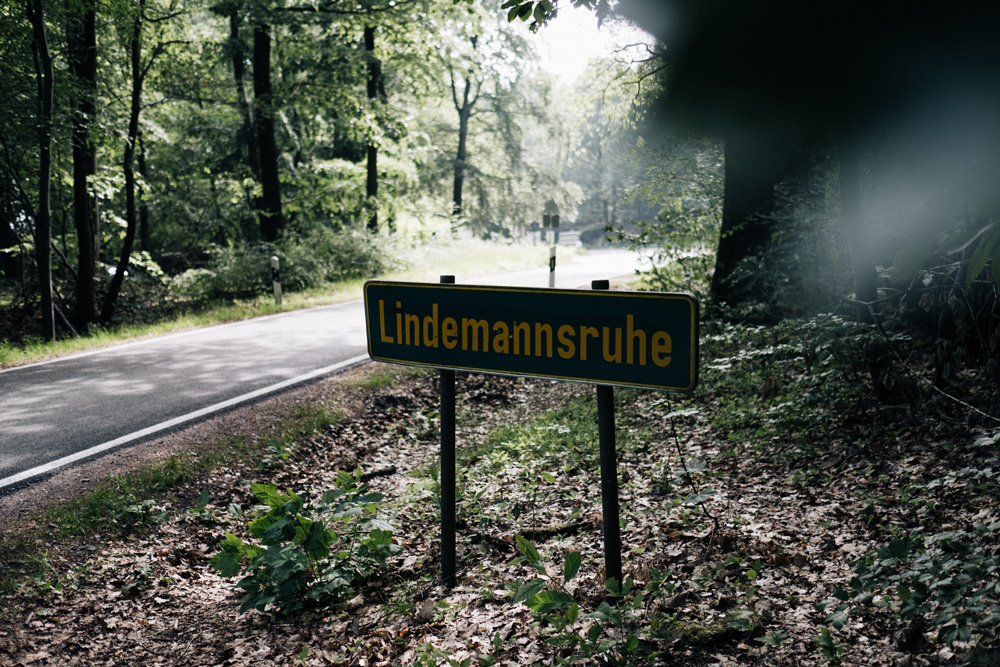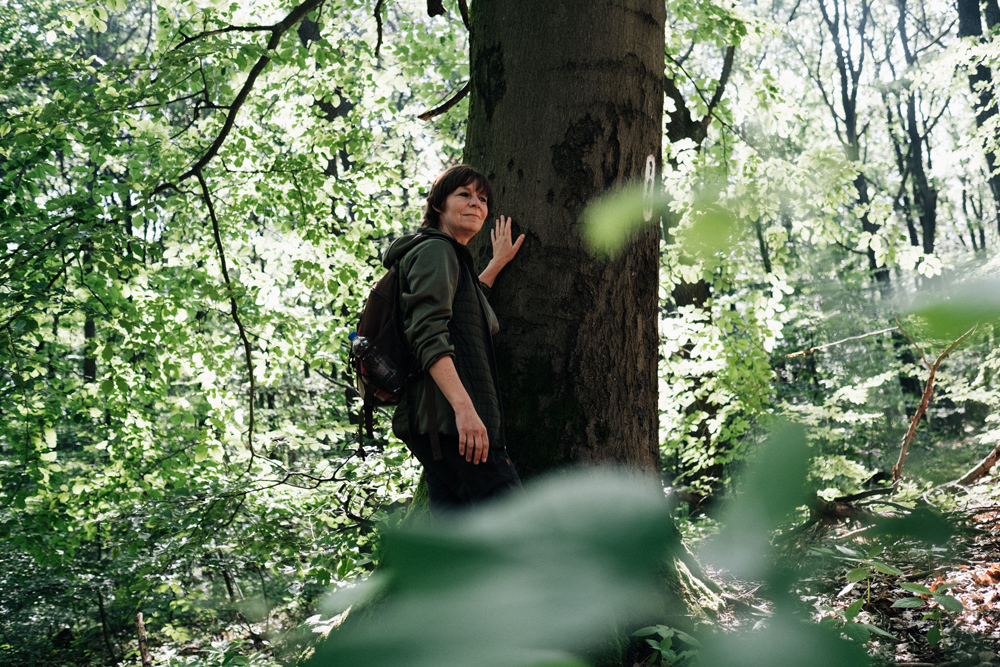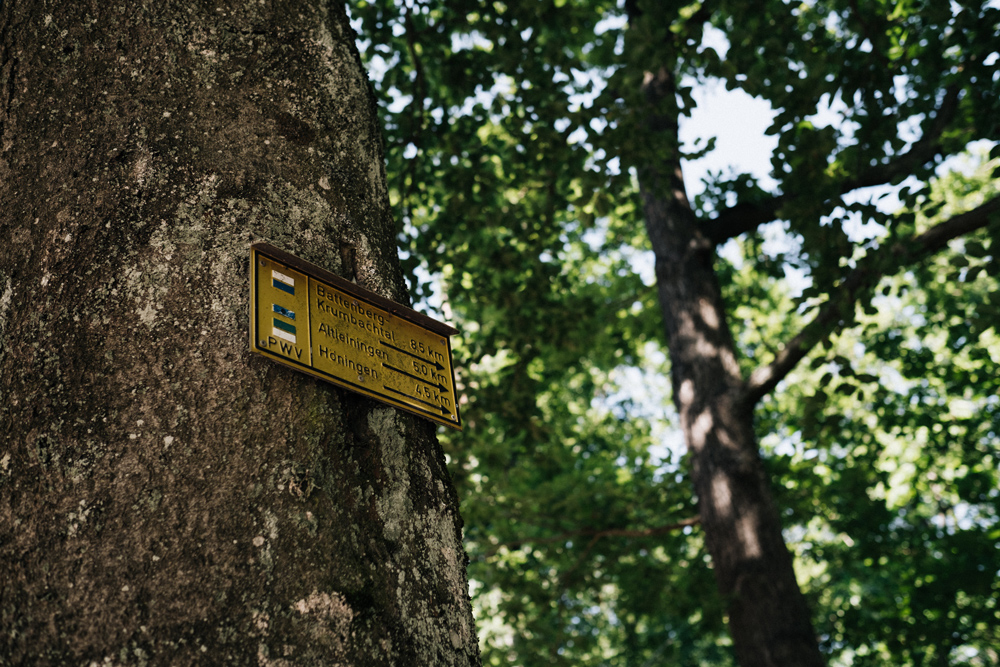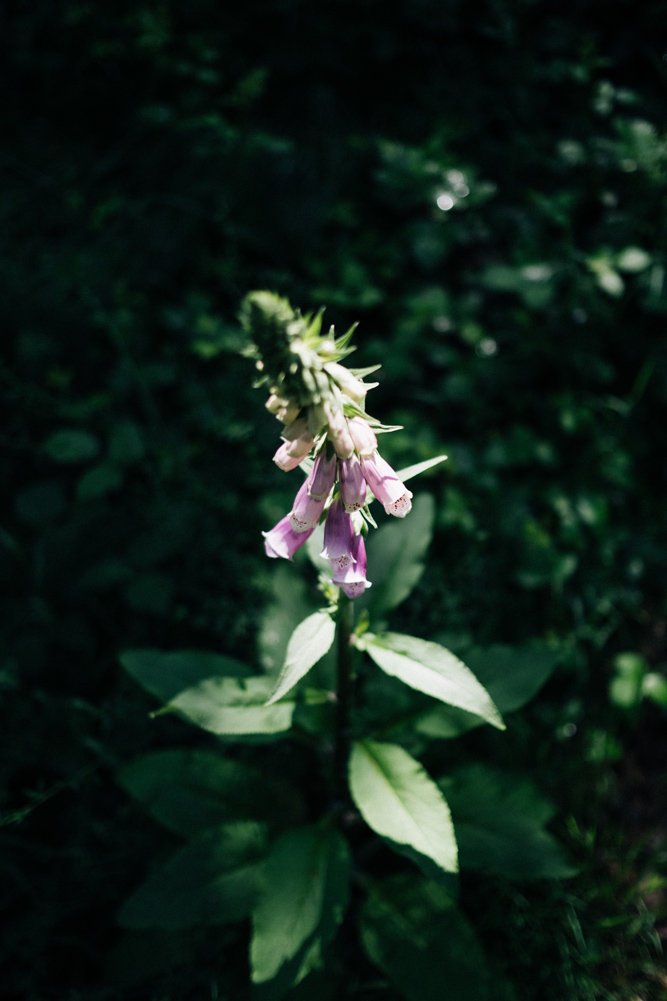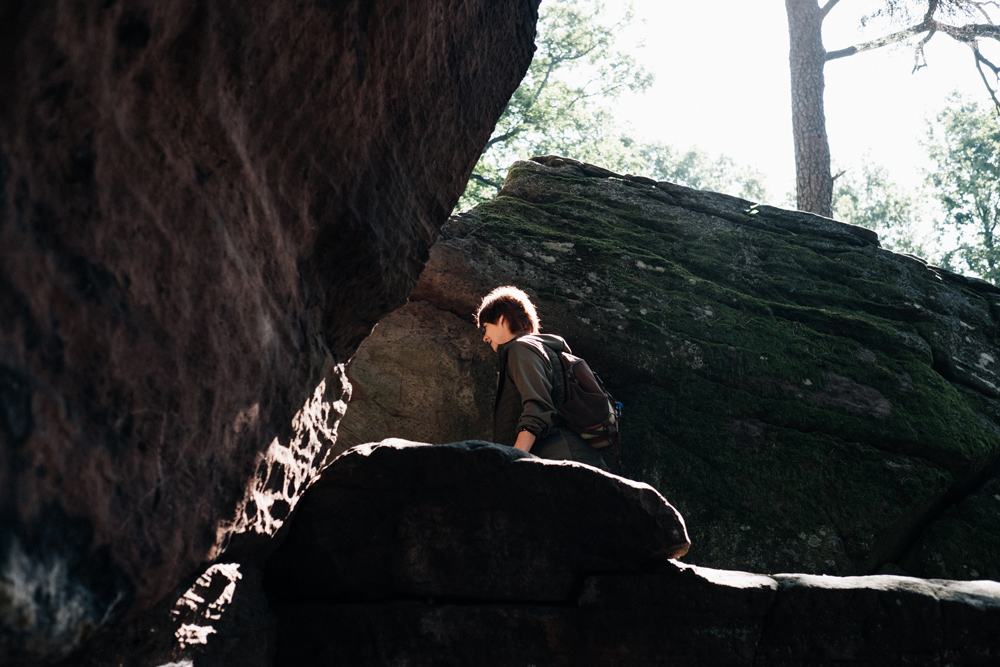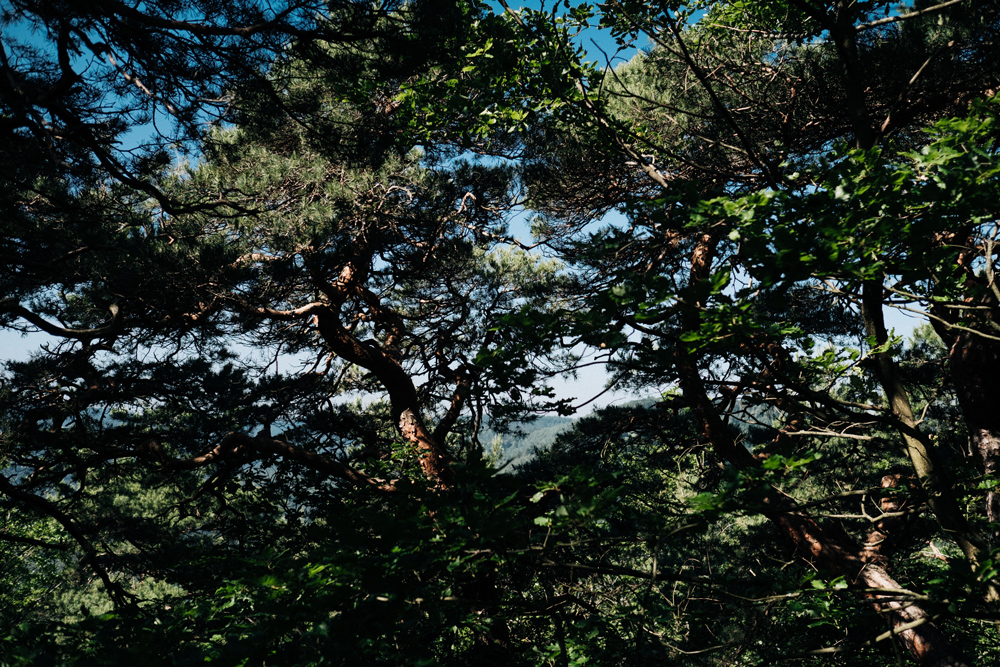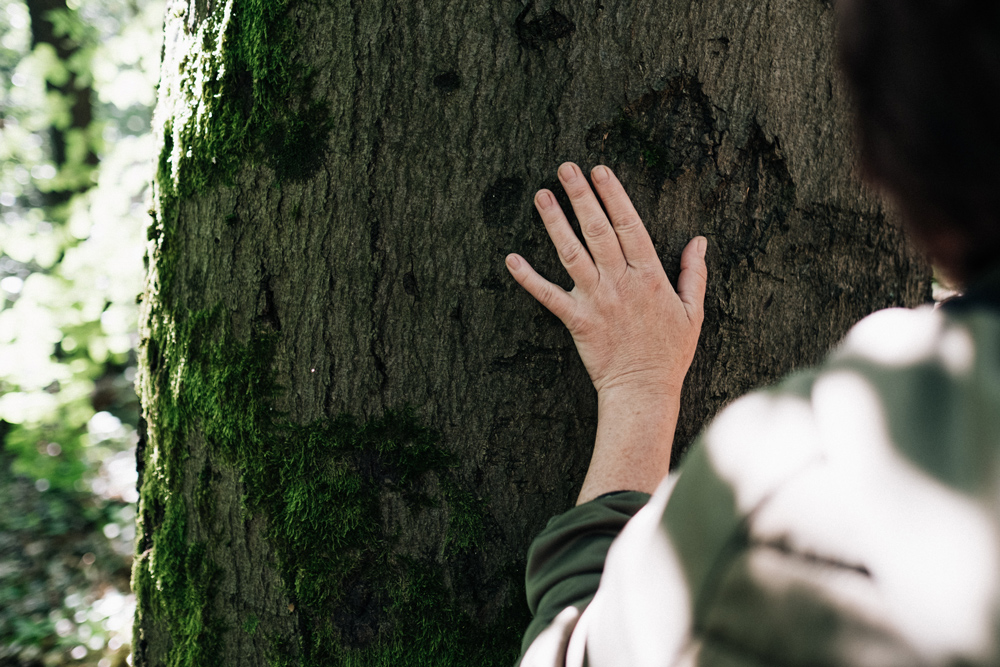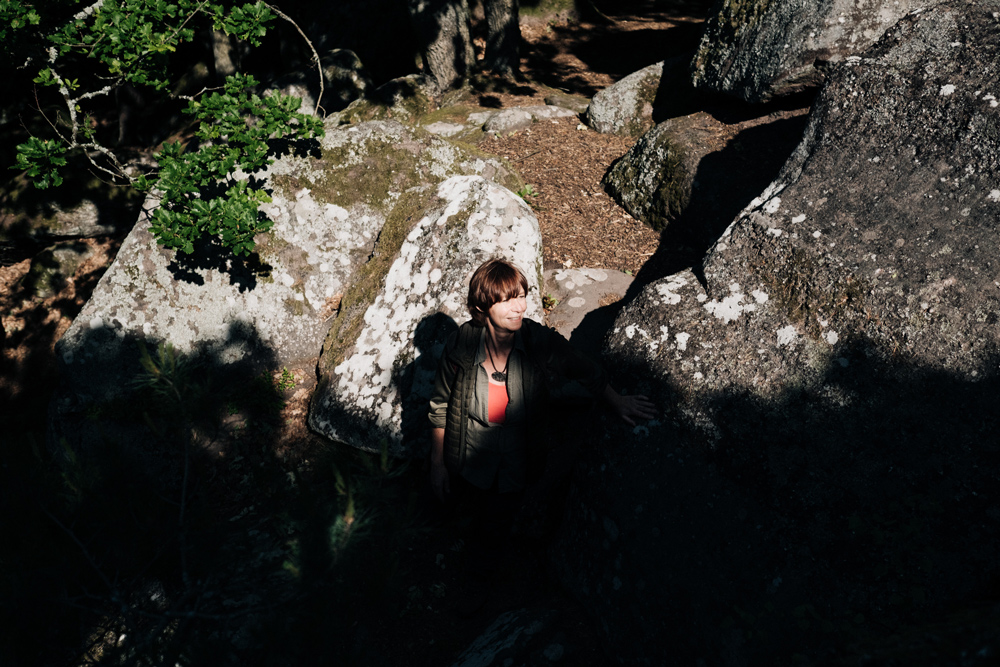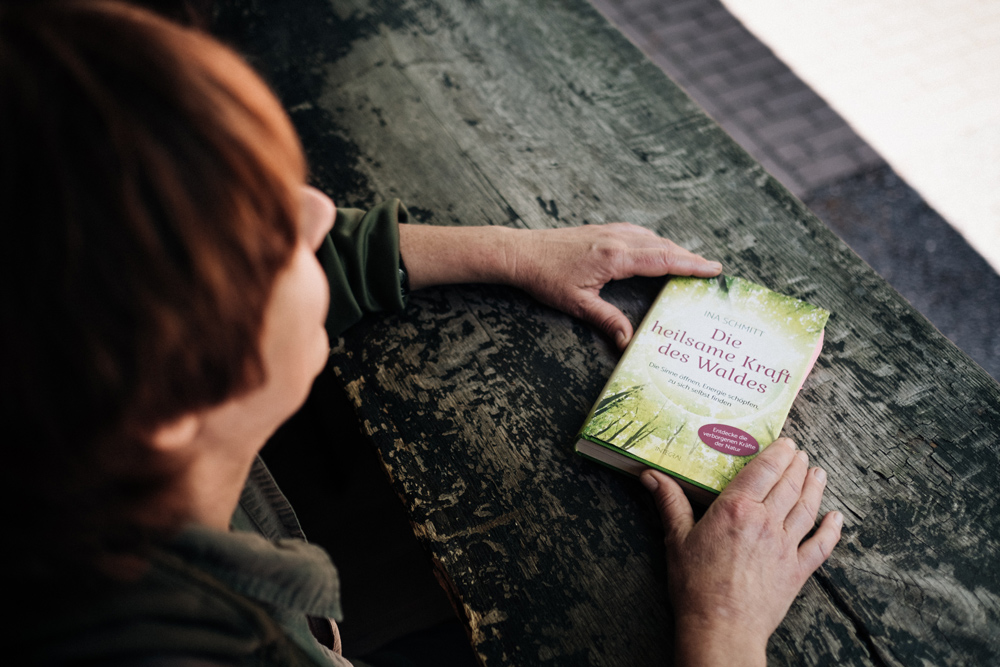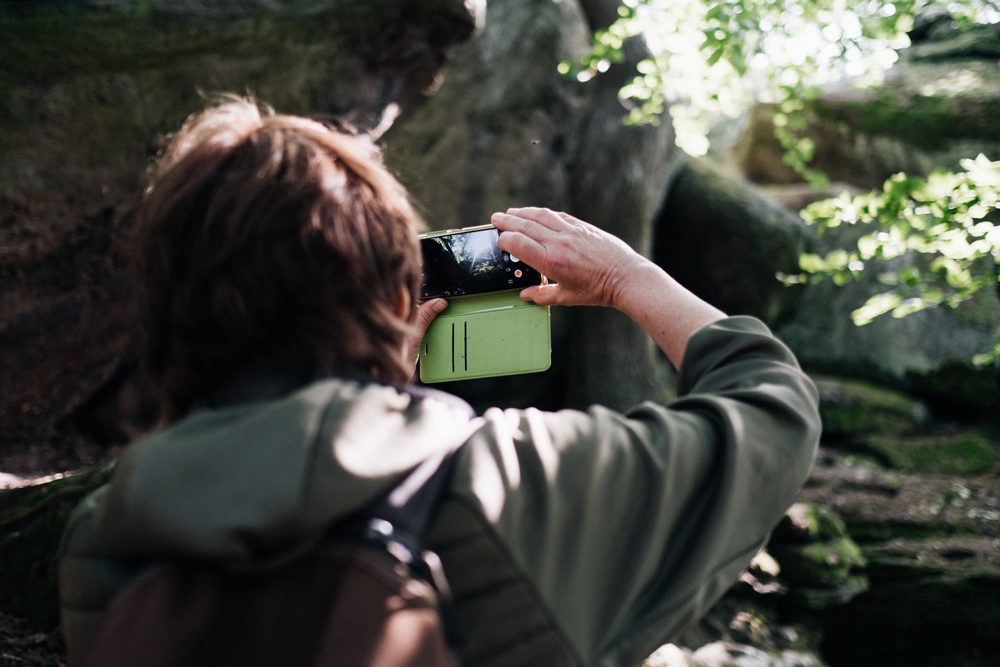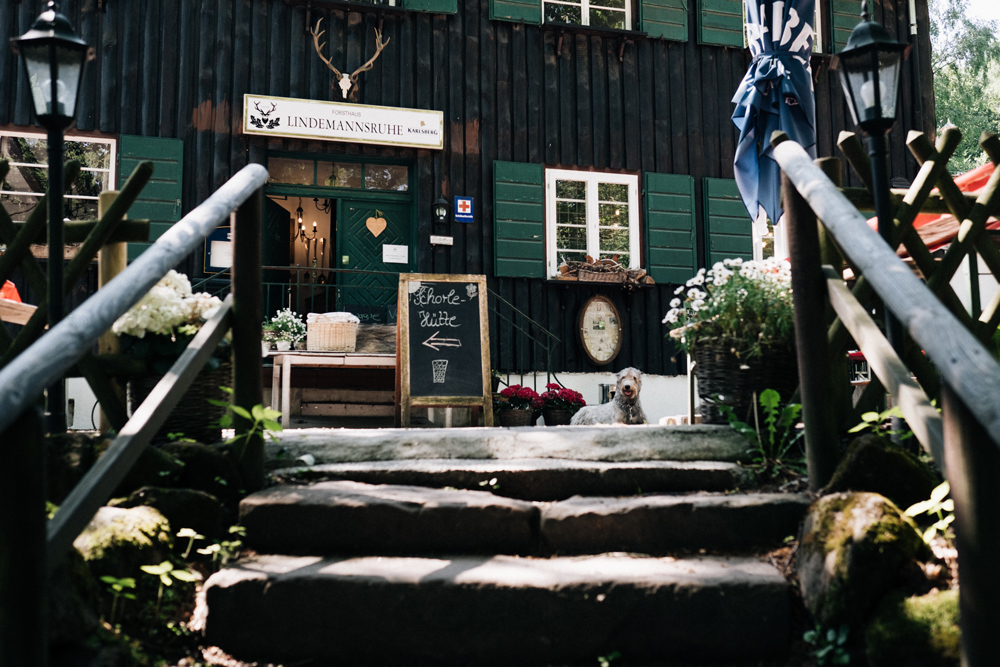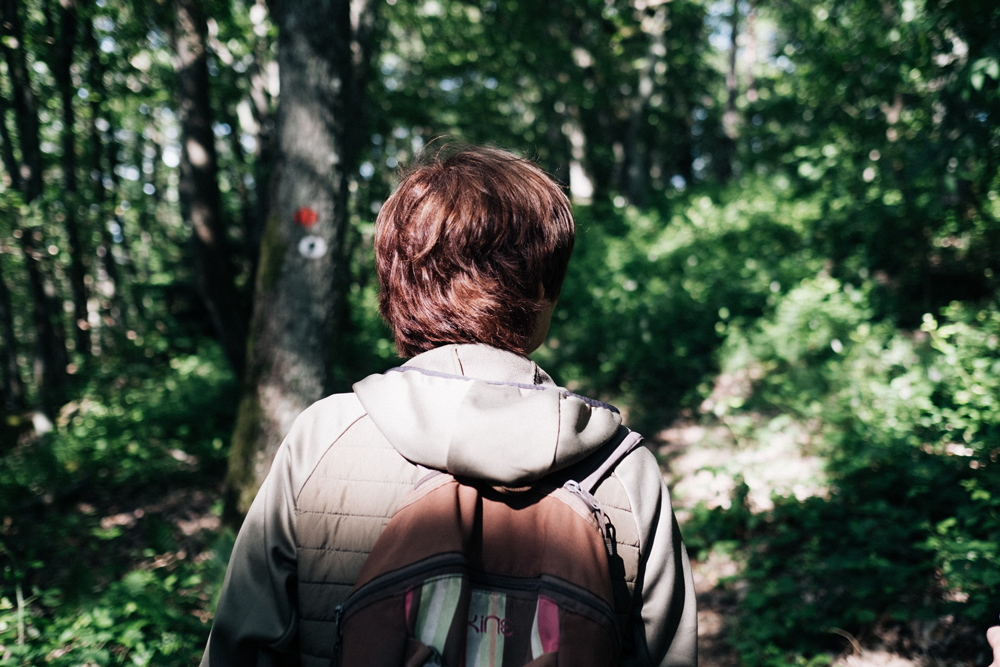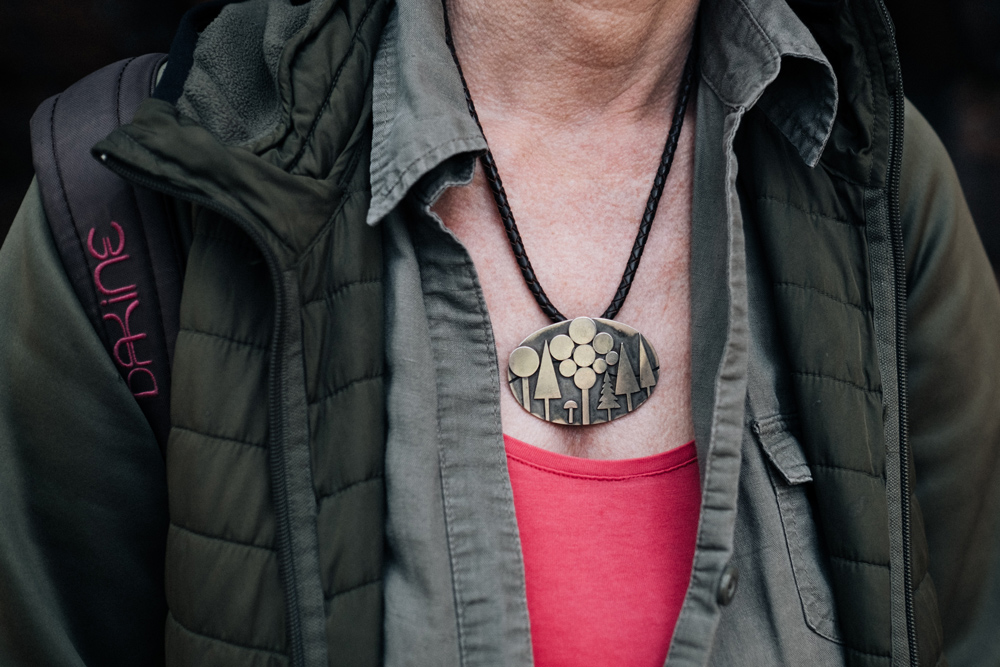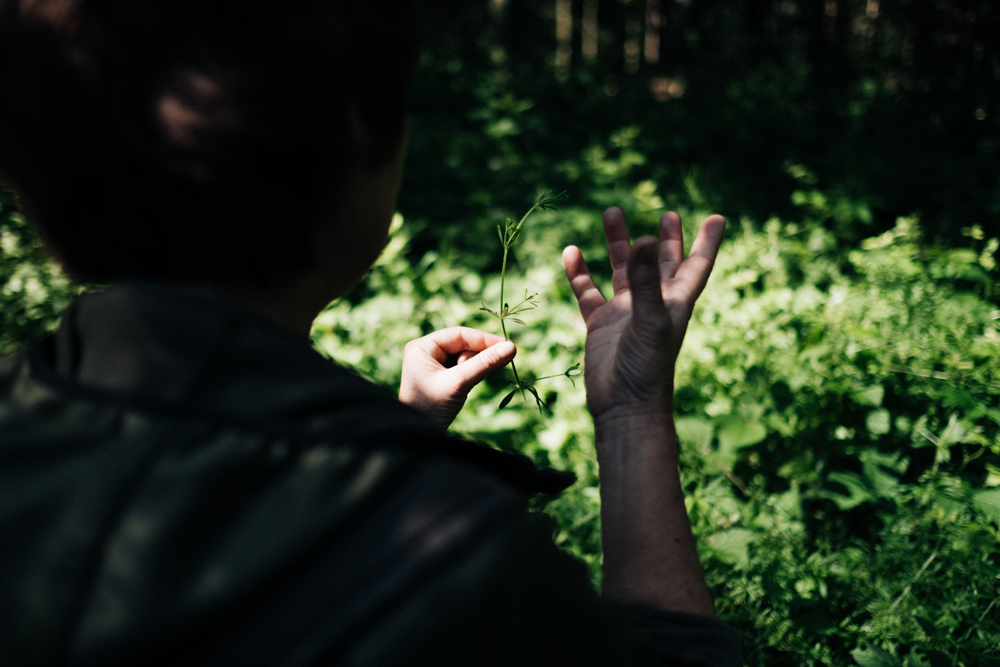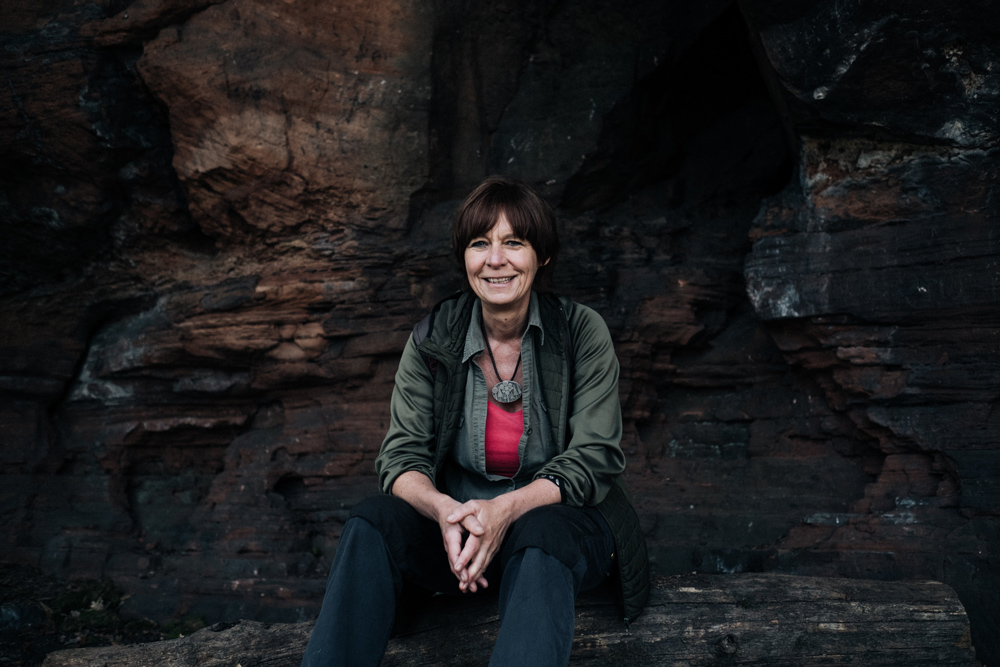To just hug a tree, try some wood sorrel, or go look for little lions: When swimming in the woods in the Palatinate, nature and wilderness teacher Ina Schmitt finds strength and peace. And she doesn’t need a tub for this.
When Ina Schmitt immerses herself in the Palatinate Forest, she does so deliberately. She then breathes deeply, feeling as if she is visiting “a cathedral”. She takes her time as she makes her way from Forsthaus Lindemannsruhe towards Heidenfels. She strolls. Something the 55-year-old also had to learn at first – just like all the others she takes with her into nature: stressed city dwellers, for example, who want to escape from the hectic everyday life for a while. Groups of singles, looking for a nature-loving partner. Or health-conscious hikers on a fasting cure. Ina Schmitt is a nature and wilderness teacher – and has discovered bathing for herself, or more particularly: forest bathing.
You don’t need a bathtub or a bikini. Instead you need some peace and quiet. This is what hikers find on a hill in the Bad Dürkheim district. And the forest bathing was “invented” far, far away from here. It comes from Japan, where it is called Shinrin Yoku. Ina Schmitt explains: “As early as 1982, the state forestry authority there suggested that excursions into the forest should be seen as part of a good lifestyle. The forest bathing that she practises includes relaxation and sensory exercises. For example, she has course participants walk barefoot, listen to the sounds or consciously breathe in the scents of the forest. The expert knows that scientists compare the time out here with a kind of aromatherapy that counteracts stress and strengthens the immune system.
Stress was something that Ina Schmitt had had enough of when she decided to change her life about 15 years ago. The trained European secretary worked in sales and marketing. She was around 40, always on duty, always available. And at some point she was completely burnt out. “Is this really everything?” she asked herself. Her answer was “a clear no”. A break led her into nature again and again – in search of more answers. How should it all continue? The trees, she says, showed her the way. They told me: “Bring the people to the forest.” Ina Schmitt attended an advanced training course at the Teutoburger Wald Nature and Wilderness School and was also trained as a fasting hiking instructor.
